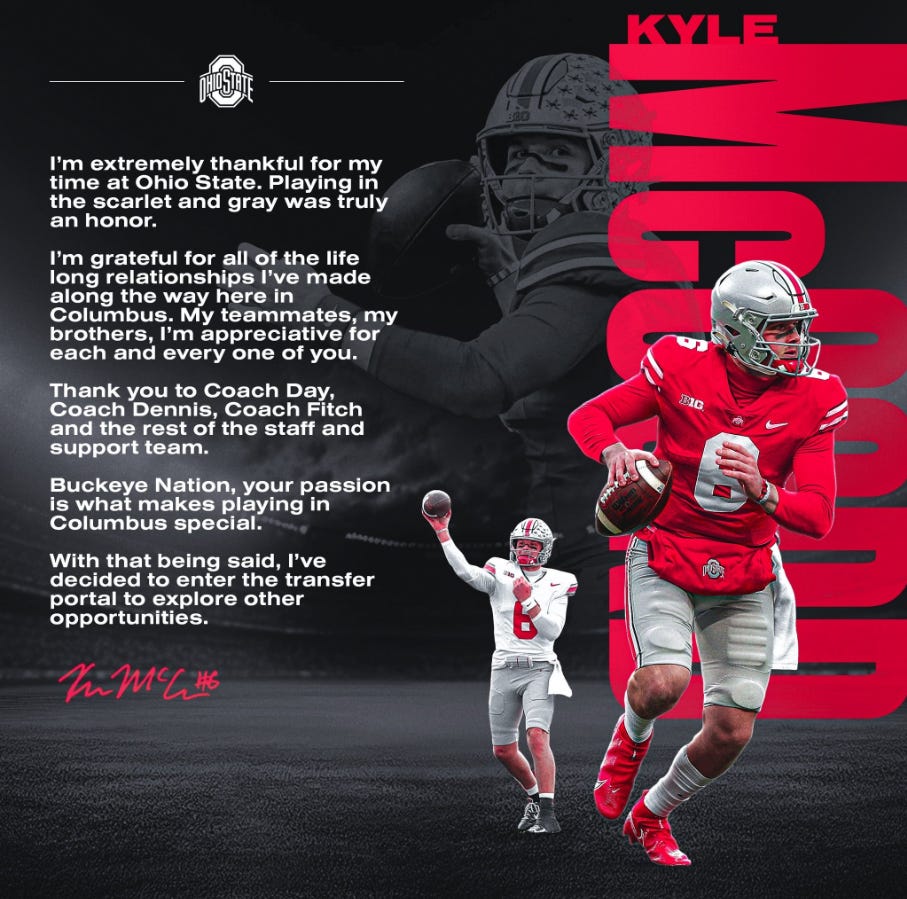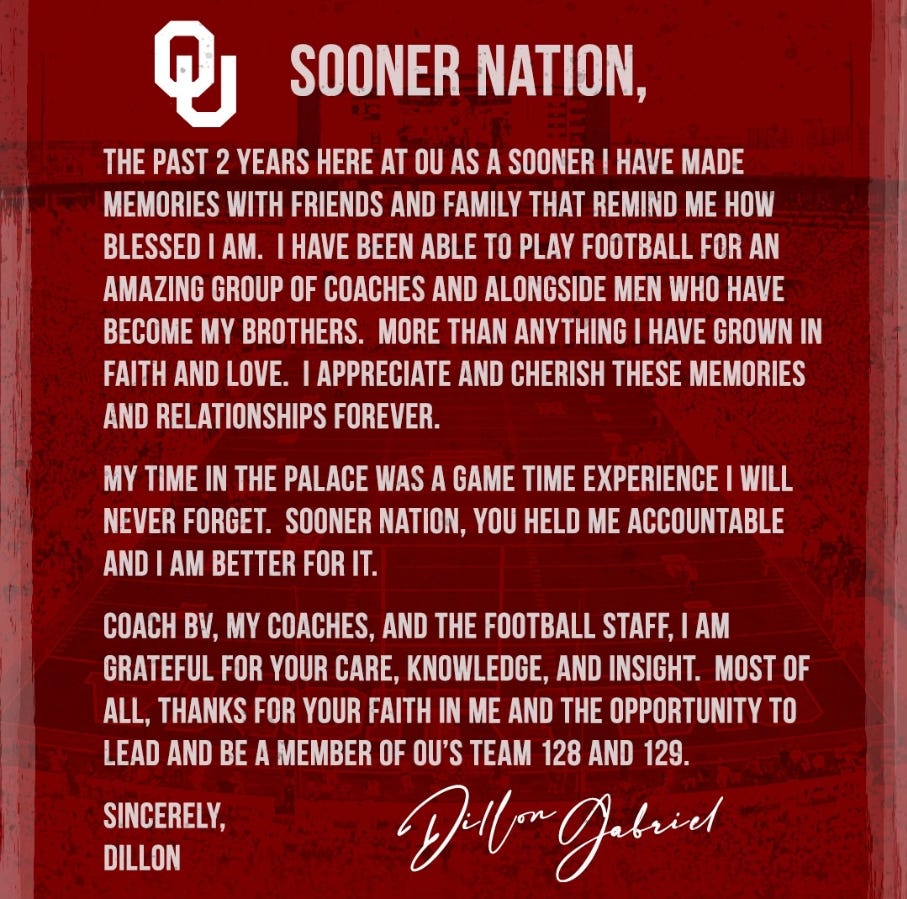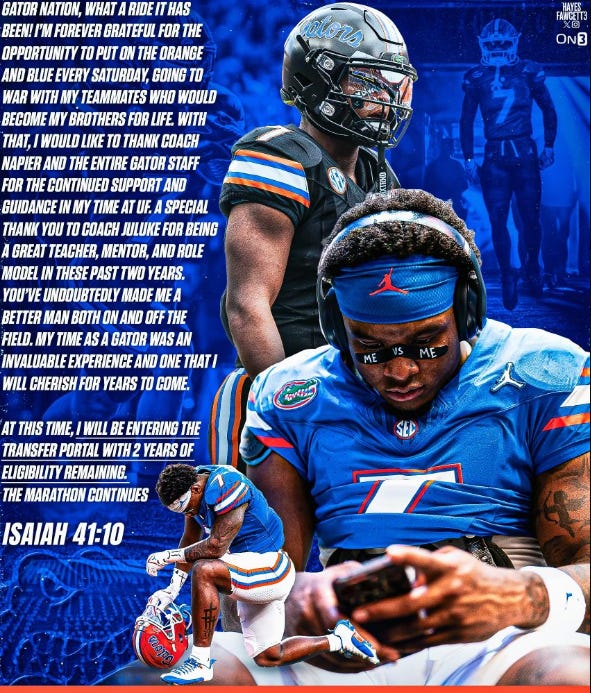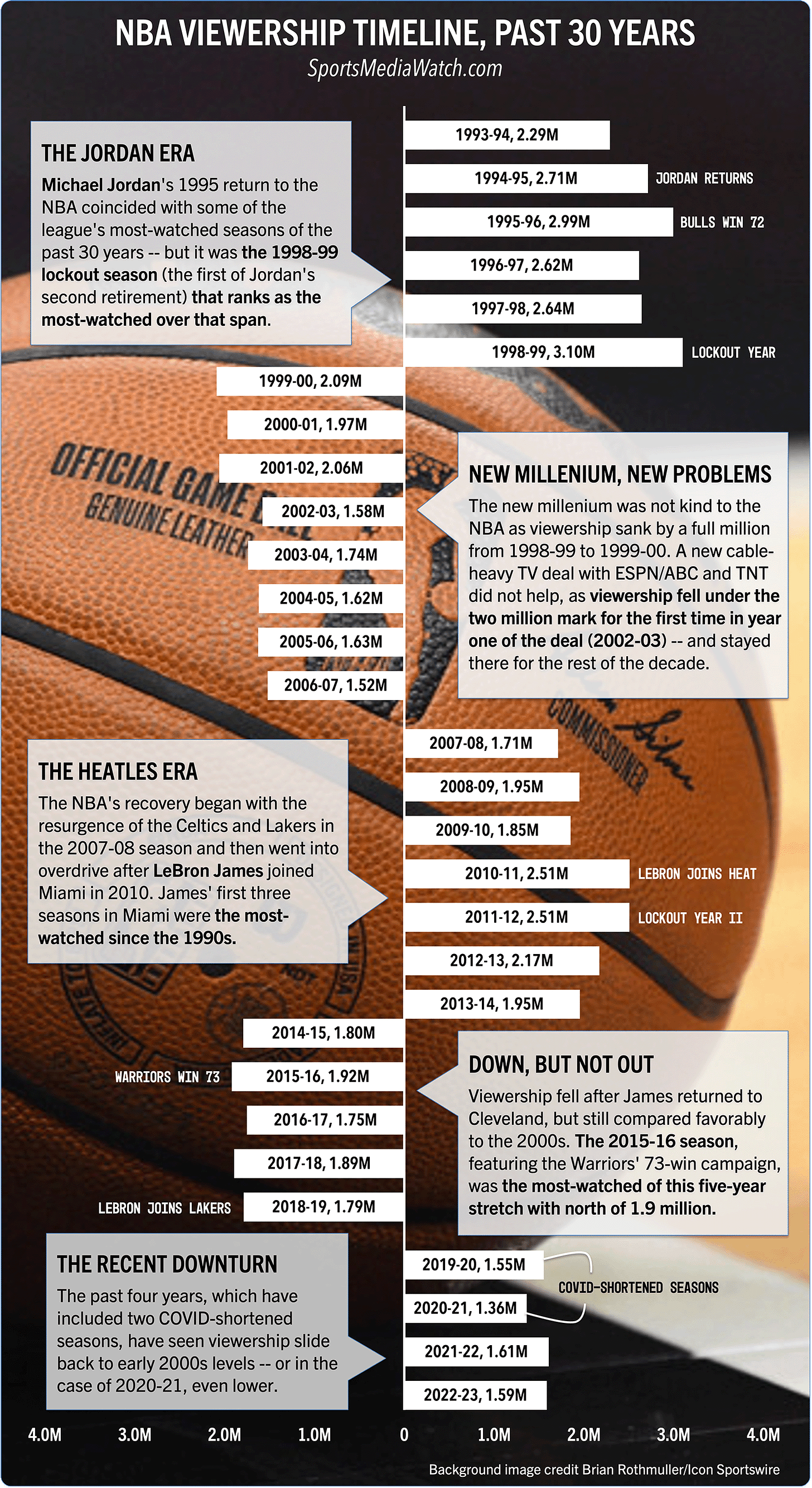College Football's South Beach Diet
Name Image and Likeness, along with the transfer portal, have created a feeding frenzy for young players among college programs, but what's the long-term impact?
Let me take you back to July 8, 2010. Hard to believe that was already 13 years ago, right? Sometimes, it feels like 2010 was only last Tuesday.
Do you remember “The Decision"? That was the made-for-TV program where LeBron James, at the time considered to be the best basketball player in the world, made his announcement of where he would be signing as a free agent for the upcoming season?
Toward the end of the hour-long spectacle, when James finally made the decision, he said, “I’m gonna take my talents to South Beach.”
The Decision
After years of playing and struggling to win a world championship in Cleveland, James decided to team up with Chris Bosh, who had most recently played for the Toronto Raptors, and Heat guard, Dwayne Wade, to form a triumvirate of superstar players in an effort to chase “not one, not two, not three, not four,” as they would famously say during their introductory press conference/pep rally a few weeks later.1
In hindsight, you may be able to look back at this moment as a seismic shift in sports. Players, such as James, showed they had power commensurate with that of the team owners or media rights companies such as the Big Four or cable networks. While league owners are discouraged from colluding (i.e. baseball owners in the 1980s), nothing was there to stop one, two, three or more players from deciding they would play together, be able to put aside any pettiness or concerns about playing time, or whose team it is, or how many endorsement contracts they’d be able to sign while sharing a market with a megawatt star such as James.
Nielson announced an average of 9.948 million people watched “The Decision” in the United States, with 13.1 million watching at the time of James' actual announcement.
The reaction to James’ decision was swift.
Images of Cleveland showed citizens torching James’ No. 23 Cavs jerseys. NBA fans and the media belittled James, and questioned any championships he might potentially win because he had actively pursued a situation to surround himself with two of the league’s other best players.
Since then, other teams and players have courted this idea, most famously, and successfully, with the Golden State Warriors, who won two NBA championships thanks to Kevin Durant’s decision to join Steph Curry and Klay Thompson.
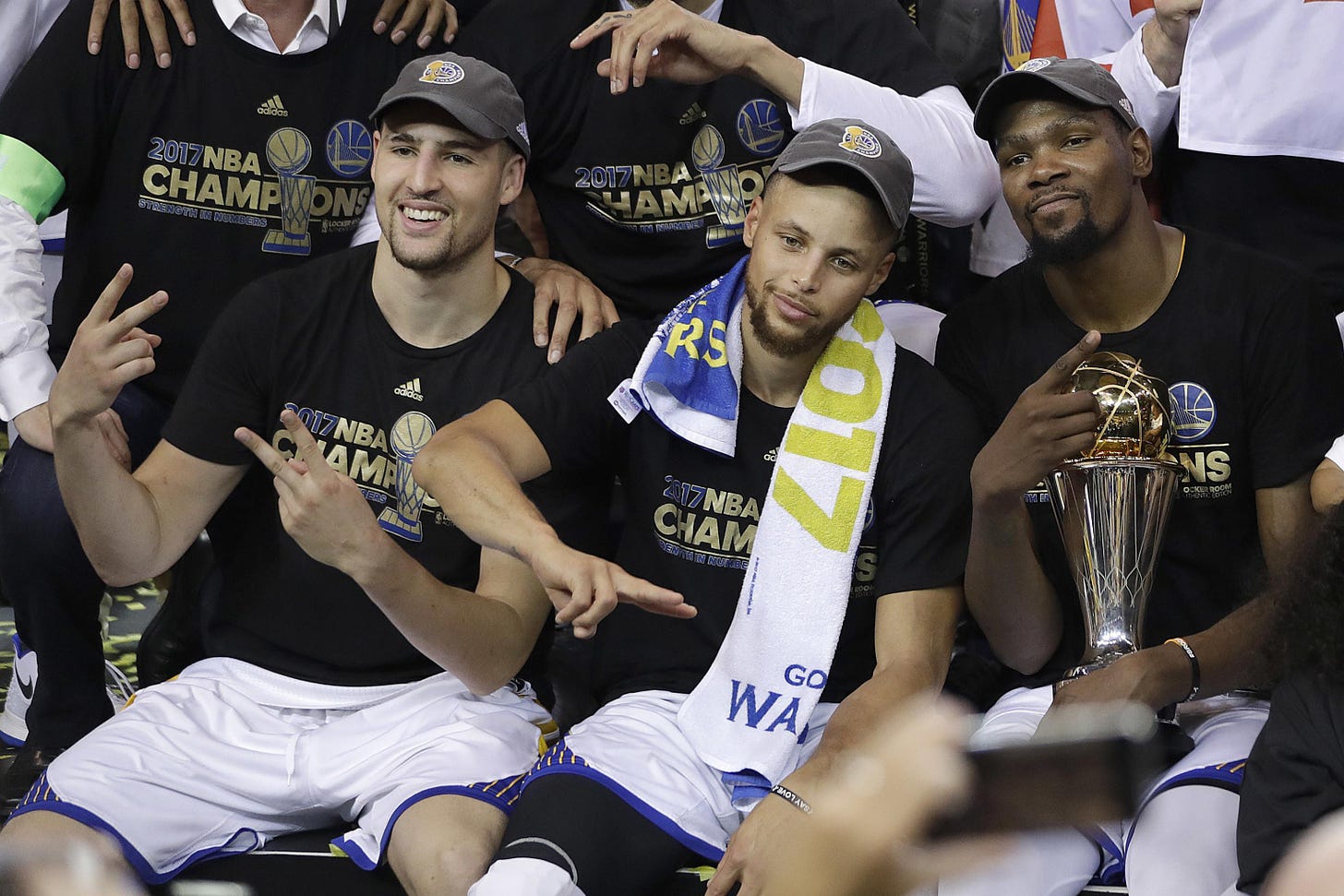
Thanks to the introduction of Name, Image and Likeness (NIL), and the transfer portal, which allows college football players to transfer schools more easily depending on the team’s coaching situation or the student’s academic standing (i.e. if they have graduated), more and more players are able to partake in their own brand of the South Beach diet, taking their talents to different teams, somewhere the system or the coach, or the money, seems like a better fit for their “talents,” much like LeBron James once did.
Since the end of the 2013 college football regular season, we have already seen a number of big name players enter the transfer portal. They include Ohio State quarterback Kyle McCord; teammate and wide receiver Marvin Harrison Jr.; Oklahoma quarterback Dillion Gabriel (who has since committed to Oregon); and many more. So many, in fact, that ESPN has a running update and Top 50 ranking of available players in the transfer portal.
The social media post by the player (below: Kyle McCord, Dillon Gabriel and Trevor Ettiene) typically includes thanking fans of the said university, the coaching staff, the lessons learned, the relationships and friendships made, and comes off suspiciously as if it were written by a publicist, especially if you’ve ever heard some of these players speak. Some will even offer a verse from scripture, as in the case of Ettiene, lending the idea of their decision to be divinely lead in some way.
College football, however, is different from the NBA.
Some of these universities, such as Penn State for example, have been around since 1855. The Denver Nuggets, the reigning, defending NBA world champions, were founded in 1976.
Most college football fans are likely to have attended the university, or their parents, or their grandparents, or maybe generations of their family have found their way to the same campus. For them, their school, and their football team, is a way of life.
At Penn State, for example, fans like me, born in 1976, only knew Joe Paterno as head coach of the Nittany Lions, until his firing by the Board of Trustees in November of 2011. Paterno, for many growing up in Pennsylvania, was as beloved by families as the pope. In fact, their portraits may have hung side by side.
That’s probably hard for a 20-year-old in 2023 to understand, much less comprehend.
They’re looking at things like playing time, coaches and coordinators, maybe the climate, or the co-eds. Oh, and the money!
Players used to live and die by their school. Just look at the number of current head coaches walking the sidelines for their alma maters: Jim Harbaugh (Michigan), Kirby Smart (Georgia), and Jeff Brohm (Louisville) are just three that immediately come to mind. It would obviously be hard to entice a coach like Harbaugh, okay, Smart, away from Georgia. He’s loyal.
Loyalty is a dying trait among colleges — coaches and players.
I wonder, however, how this might ultimately affect the long term popularity and success of the college game? I won’t even mention the College Football Playoff committee’s decision to exclude an undefeated Top 5 conference champion Florida State team.
The money and interest in the college game is at an all-time high. But I believe it is on a slippery slope. Free-agency in college might be good for the players’ wallets, and the television or streaming partners’ bottom lines for now. But what happens when we see fans, tired of this flip-flopping start to grow ambivalent, or turn away en mass?
There is a precedent.
Back to the NBA
In James’ first season in Miami, the NBA averaged 2.51 million viewers. Last season, the NBA averaged just 1.59 million viewers. That’s a dramatic drop in the span of little more than a decade. And if you’re running a business, those numbers are not heading in the right direction. This might be just one of the reasons Dallas Mavericks owner Mark Cuban recently sold a portion of his controlling interest in the team. The writing is on the wall.
We’ll see what happens to college football on the South Beach diet.
Perhaps we will start to see an era of one-year super teams. Maybe the days of long-standing traditional college football powers: Alabama, Michigan, Ohio State, Notre Dame, Penn State, Georgia, etc. are over.
And perhaps it too will cause the college game to shed some weight viewers. But that’s not what anyone involved in the game wants.
Keep that in mind the next time another player announces on social media they’re bringing their talents elsewhere.
The Big Three, as they became known, appeared in four straight NBA Finals, but winning only two championships.





